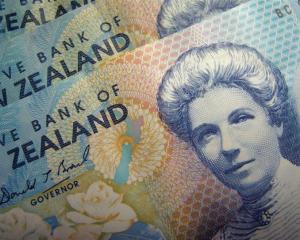The New Zealand dollar fell around one US cent after a shock rise in the unemployment rate to 7.3 percent in the December quarter.
The NZ dollar fell to a low of US69.65c from US70.80c just before the report. The higher than expected increase in unemployment means interest rates may remain lower for longer, which makes the NZ dollar less attractive to investors.
"It was a huge shock to the market," said Imre Speizer, currency strategist at Westpac.
The Reserve Bank of New Zealand (RBNZ) was expecting an unemployment rate of 6.6 percent, while the market was expecting 6.8 percent.
"It is an important input into the RBNZ's thinking on when it will start hiking rates and the consensus prior to the number was April. The probability of an April hike has diminished considerably and we are now looking at June," Mr Speizer said.
Yields in the swap market also fell in response to the data. The two-year swap rate fell by about 10 basis points to 4.27 percent, dealers said.
The overnight index swap, which is an indicator of what the market thinks the official cash rate will be, also fell about 10 basis points.
Mr Speizer said the currency had strong support at US69.75c so the NZ dollar should hover around this level for a while.
"Unless you get some positive surprises from somewhere else in the world I think eventually we will break below this," he said.
The NZ dollar was US70.77c at 8am compared with US71.06c at the end of yesterday's local session.
The NZ dollar also lost ground overnight against the aussie dollar, easing to A79.12c by early afternoon from A80.23c at 5pm yesterday. The trade weighted index fell to 64.50 from 65.44.





